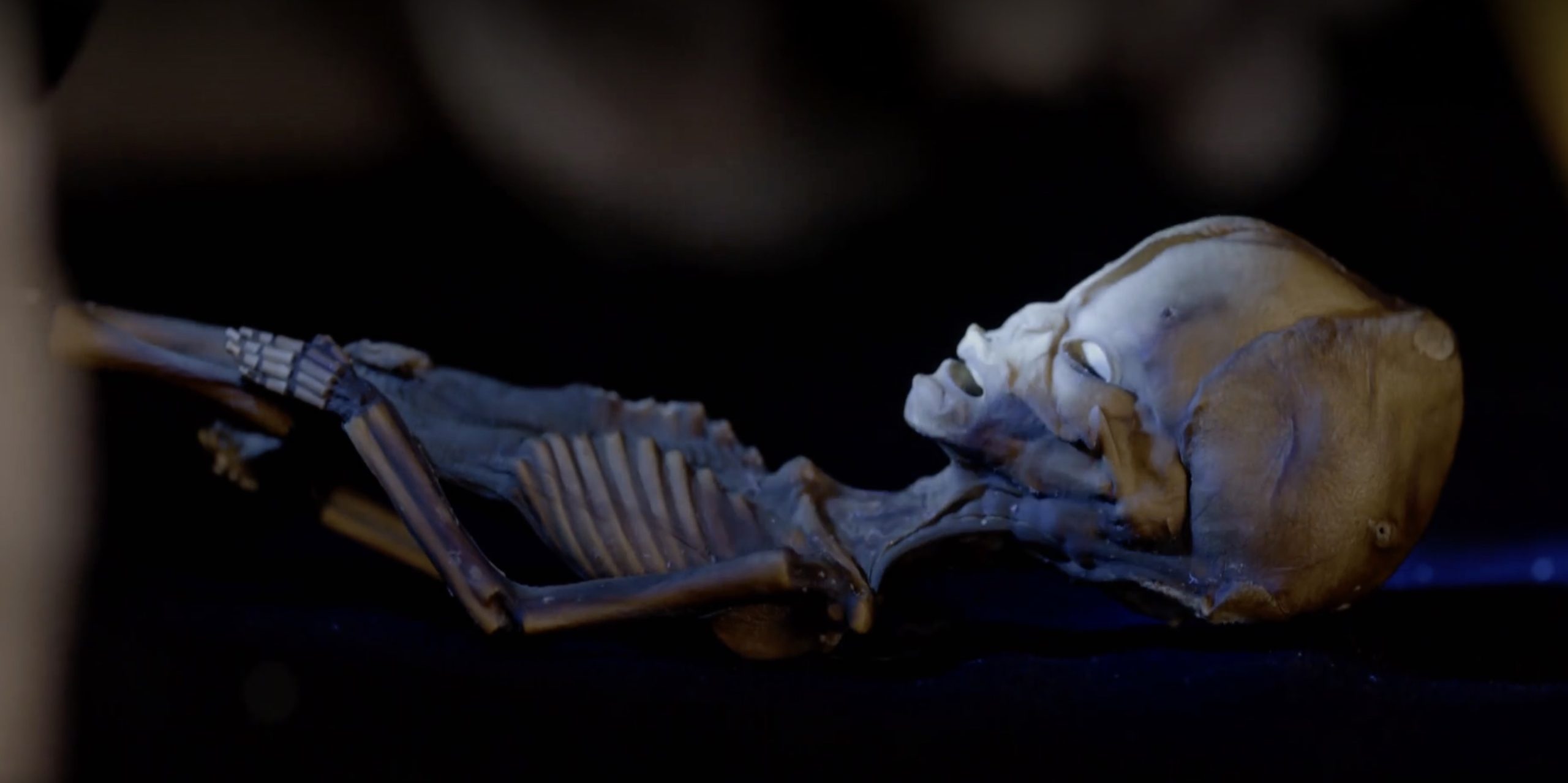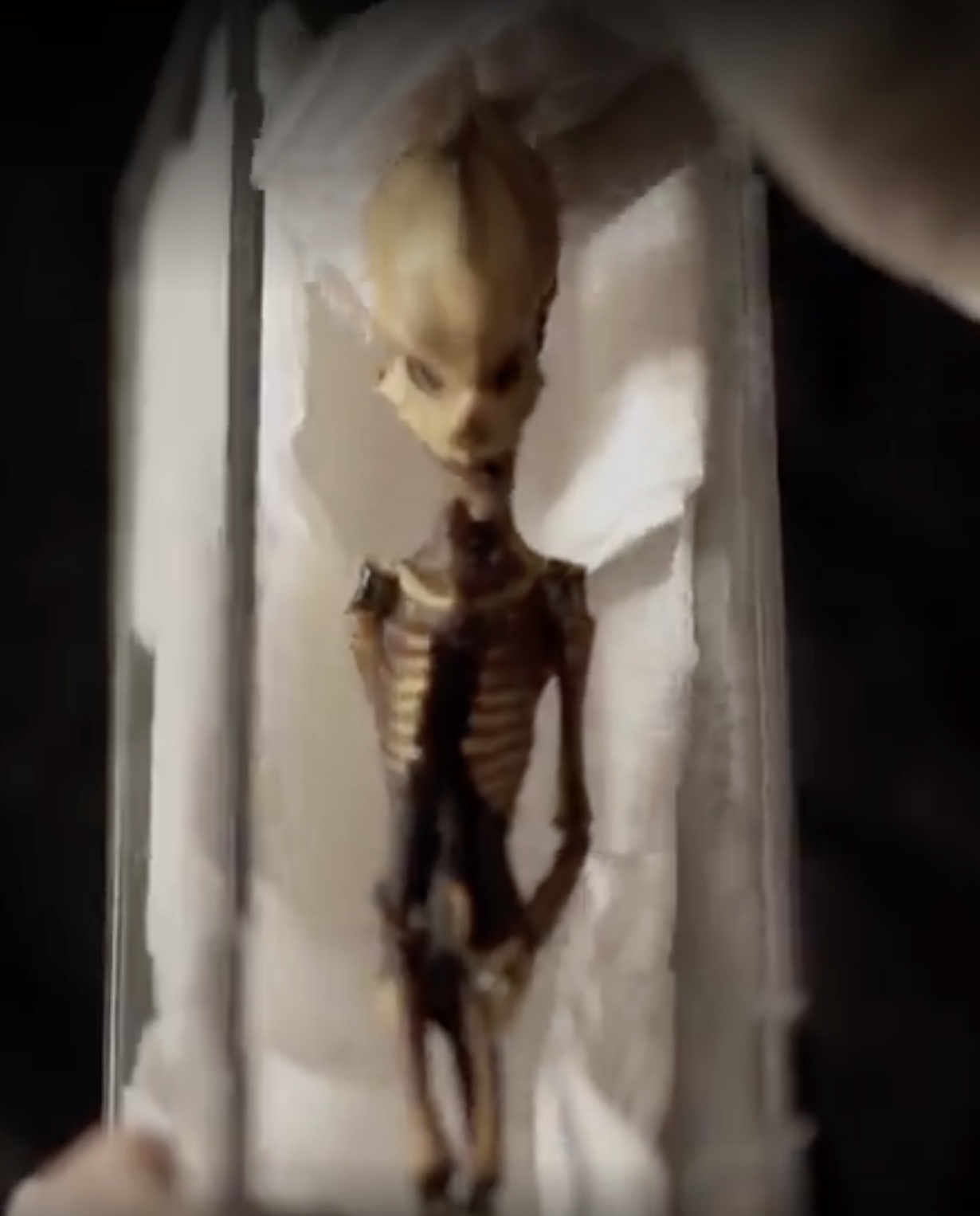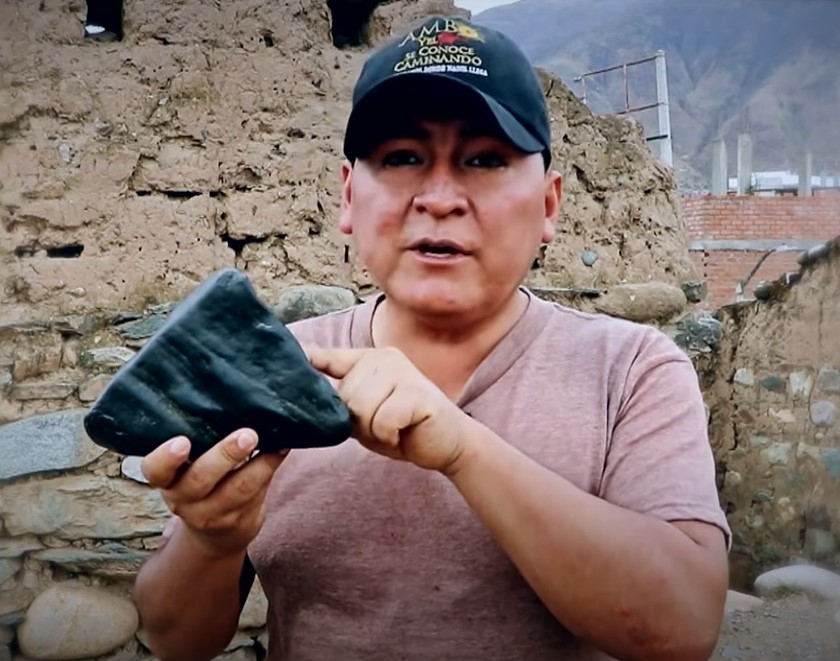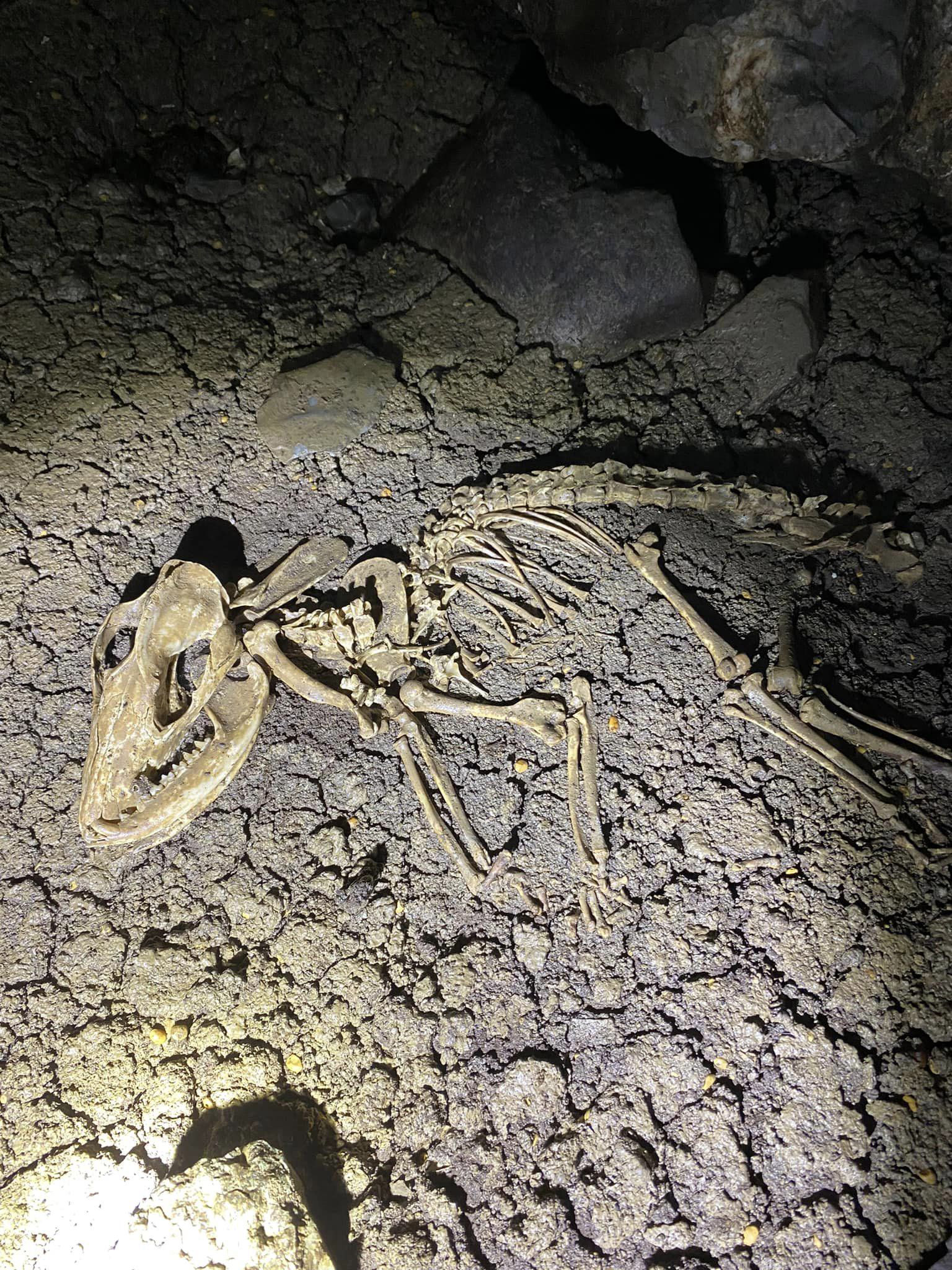A miniature ‘alien’ skeleton unearthed in a desert two decades ago may represent a minuscule humanoid that inhabited a cave during the Middle Ages.
The skeletal remains, famously known as ‘Ata,’ were stumbled upon within an abandoned church, sparking curiosity and intrigue.
This enigmatic little corpse came to light through the discovery efforts of Oscar Muñoz, who later transferred ownership to the Spanish entrepreneur and researcher Ramón Navia-Osorio Villar.
Mr. Navia-Osorio posits a fascinating theory regarding the skeleton, asserting that it belongs to a diminutive race of individuals who once coexisted alongside the Aymara people in South America centuries ago.

An initial DNA analysis conducted in 2018 indicated that Ata was a human female fetus displaying unique mutations linked to dwarfism and scoliosis.
However, recent research led by Professor Siân Halcrow and her international team of bioarchaeologists has challenged this previous study, declaring, “As authorities in the fields of human anatomy and skeletal development, we discern no evidence supporting the skeletal abnormalities posited by the initial authors.”
Since the discovery of Ata, conjecture concerning its origins has spun wildly out of control, with many entertaining the notion that it hails from extraterrestrial realms.
This speculative theory gained traction after Ata appeared in a documentary, leading some to consider it as potential proof of alien existence.
Initially found in the Atacama Desert in Chile in 2003, Ata’s mystique has only deepened.

However, in a recent appearance on the Spanish TV show ‘Fourth Millennium,’ Mr. Navia-Osorio emphatically ruled out the possibility of Ata being of extraterrestrial origin.
He stated, “We received it at the Spanish Royal Academy of Sciences, where we conducted the initial X-ray examination, utilizing low radiation to preserve the specimen. The initial impressions were perplexing—its disproportionately large head, elongated hands, absence of kneecaps, and a clavicle more triangular than humans raised concerns.”
Mr. Navia-Osorio recounted his growing unease: “I began to worry.”
According to him, several of his colleagues categorically asserted that Ata was not a human fetus. He elaborated, “How could it be a fetus when it displayed calluses on its feet? This creature was not extraterrestrial; it was terrestrial.”

In Mr. Navia-Osorio’s view, Ata did not originate from outer space but coexisted with humans during a bygone era.
He elaborated, “They were diminutive individuals who took shelter in caves and only ventured out under the cover of night, explaining their peculiar almond-shaped eyes. A native friend from the Aymara tribe even shared tales of these beings living alongside their ancestors before the arrival of Spanish settlers.”
The debate surrounding Ata’s origins continues to captivate and intrigue, leaving us to ponder the mysteries of this diminutive ‘alien’ and the fascinating history it might reveal.
Disclaimers:
This content and images have been licensed to use by Jam Press, edited and syndicated by https://www.znewsservice.com/.
Should you have any questions relating to this content please get in touch with Jam Press via https://www.jampress.co.uk/contact-us/






